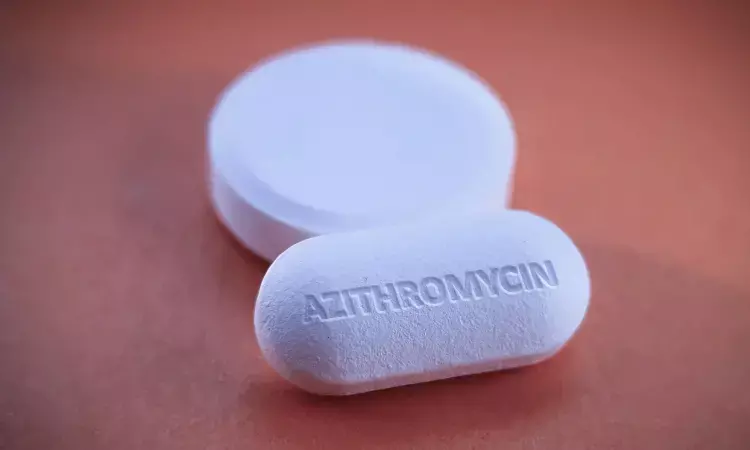- Home
- Medical news & Guidelines
- Anesthesiology
- Cardiology and CTVS
- Critical Care
- Dentistry
- Dermatology
- Diabetes and Endocrinology
- ENT
- Gastroenterology
- Medicine
- Nephrology
- Neurology
- Obstretics-Gynaecology
- Oncology
- Ophthalmology
- Orthopaedics
- Pediatrics-Neonatology
- Psychiatry
- Pulmonology
- Radiology
- Surgery
- Urology
- Laboratory Medicine
- Diet
- Nursing
- Paramedical
- Physiotherapy
- Health news
- Fact Check
- Bone Health Fact Check
- Brain Health Fact Check
- Cancer Related Fact Check
- Child Care Fact Check
- Dental and oral health fact check
- Diabetes and metabolic health fact check
- Diet and Nutrition Fact Check
- Eye and ENT Care Fact Check
- Fitness fact check
- Gut health fact check
- Heart health fact check
- Kidney health fact check
- Medical education fact check
- Men's health fact check
- Respiratory fact check
- Skin and hair care fact check
- Vaccine and Immunization fact check
- Women's health fact check
- AYUSH
- State News
- Andaman and Nicobar Islands
- Andhra Pradesh
- Arunachal Pradesh
- Assam
- Bihar
- Chandigarh
- Chattisgarh
- Dadra and Nagar Haveli
- Daman and Diu
- Delhi
- Goa
- Gujarat
- Haryana
- Himachal Pradesh
- Jammu & Kashmir
- Jharkhand
- Karnataka
- Kerala
- Ladakh
- Lakshadweep
- Madhya Pradesh
- Maharashtra
- Manipur
- Meghalaya
- Mizoram
- Nagaland
- Odisha
- Puducherry
- Punjab
- Rajasthan
- Sikkim
- Tamil Nadu
- Telangana
- Tripura
- Uttar Pradesh
- Uttrakhand
- West Bengal
- Medical Education
- Industry
Azithromycin does not improve lung function in HIV-associated chronic lung disease in children: JAMA

UK: Prophylactic use of azithromycin was associated with a lower rate of acute respiratory exacerbations (AREs) in children with HIV-associated chronic lung disease (HCLD) but did not improve lung function, suggests a recent study. Further the study, published in JAMA Network Open, found hospitalizations to be lower in azithromycin groip but the difference was not significant.
Despite the use of antiretroviral therapy (ART), HCLD is common in children (and is associated with small airways disease) and can lead to substantial. morbidity. Azithromycin has immunomodulatory and antibiotic activity and may be effective for the treatment of HCLD through the reduction of respiratory tract infections and inflammation. Considering this, Rashida A. Ferrand, London School of Hygiene and Tropical Medicine, London, United Kingdom, and colleague aimed to determine whether prophylactic azithromycin is effective in preventing worsening of lung function and in reducing AREs in children with HCLD taking ART in the BREATHE trial.
BREATHE is a double-blind, placebo-controlled, randomized clinical trial conducted between 2016 and 2019, including 12 months of follow-up, at outpatient HIV clinics in 2 public sector hospitals in Malawi and Zimbabwe. 347 patients were randomized in the ratio of 1:1 to receive either once-weekly oral azithromycin with weight-based dosing, for 48 weeks (azithromycin group; n=174) or placebo (placebo group; n=173); ; 162 participants in the azithromycin group and 146 placebo group participants had a primary outcome available and were analyzed.
The participants were children aged 6 to 19 years with perinatally acquired HIV and HCLD (defined as forced expiratory volume in 1 second [FEV1] z score < −1) who were taking ART for 6 months or longer. Data analysis was performed from September 2019 to April 2020.
The primary outcome was the mean difference in FEV1 z score using intention-to-treat analysis for participants seen at end line. Secondary outcomes included AREs, all-cause hospitalizations, mortality, and weight-for-age z score.
Key findings of the study include:
- The mean difference in FEV1 z score was 0.06 higher in the azithromycin group than in the placebo group, a nonsignificant difference.
- The rate of AREs was 12.1 events per 100 person-years in the azithromycin group and 24.7 events per 100 person-years in the placebo groups (hazard ratio, 0.50).
- The hospitalization rate was 1.3 events per 100 person-years in the azithromycin group and 7.1 events per 100 person-years in the placebo groups, but the difference was not significant (hazard ratio, 0.24;).
- Three deaths occurred, all in the placebo group.
- The mean weight-for-age z score was 0.03 higher in the azithromycin group than in the placebo group, although the difference was not significant.
- There were no drug-related severe adverse events.
"Future research should identify patient groups who would benefit most from this intervention and optimum treatment length, to maximize benefits while reducing the risk of antimicrobial resistance," concluded the authors.
"Effect of Once-Weekly Azithromycin vs Placebo in Children With HIV-Associated Chronic Lung Disease: The BREATHE Randomized Clinical Trial," is published in the JAMA Network Open.
DOI: https://jamanetwork.com/journals/jamanetworkopen/fullarticle/2774283
Dr Kamal Kant Kohli-MBBS, DTCD- a chest specialist with more than 30 years of practice and a flair for writing clinical articles, Dr Kamal Kant Kohli joined Medical Dialogues as a Chief Editor of Medical News. Besides writing articles, as an editor, he proofreads and verifies all the medical content published on Medical Dialogues including those coming from journals, studies,medical conferences,guidelines etc. Email: drkohli@medicaldialogues.in. Contact no. 011-43720751


